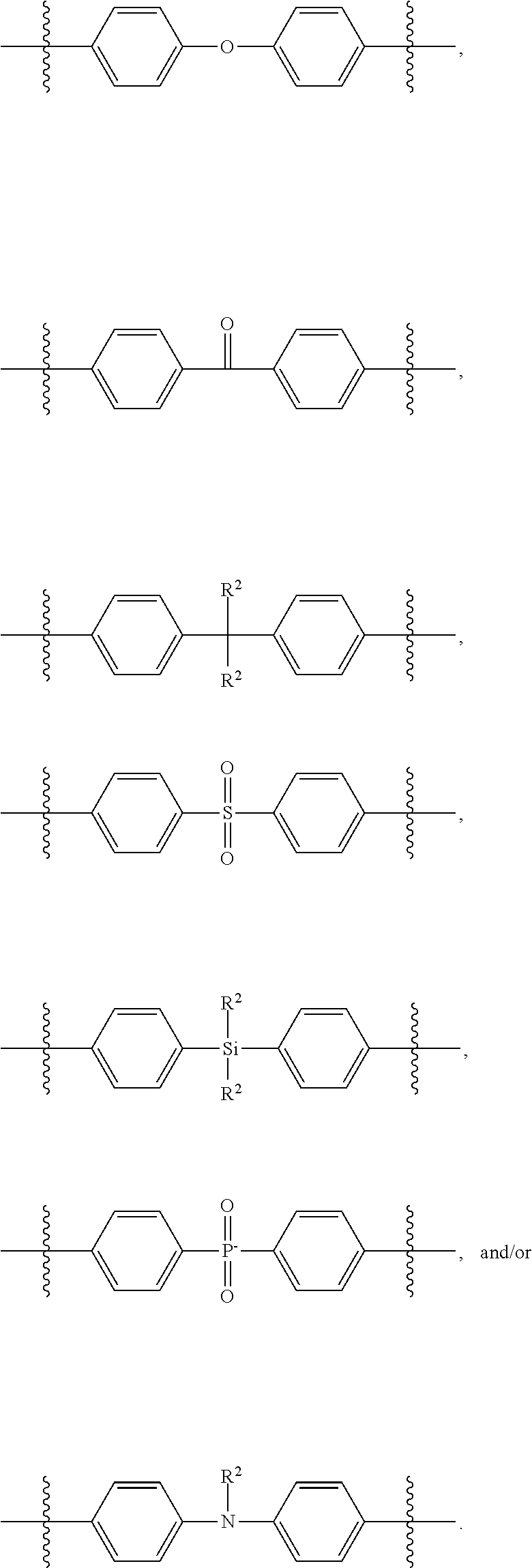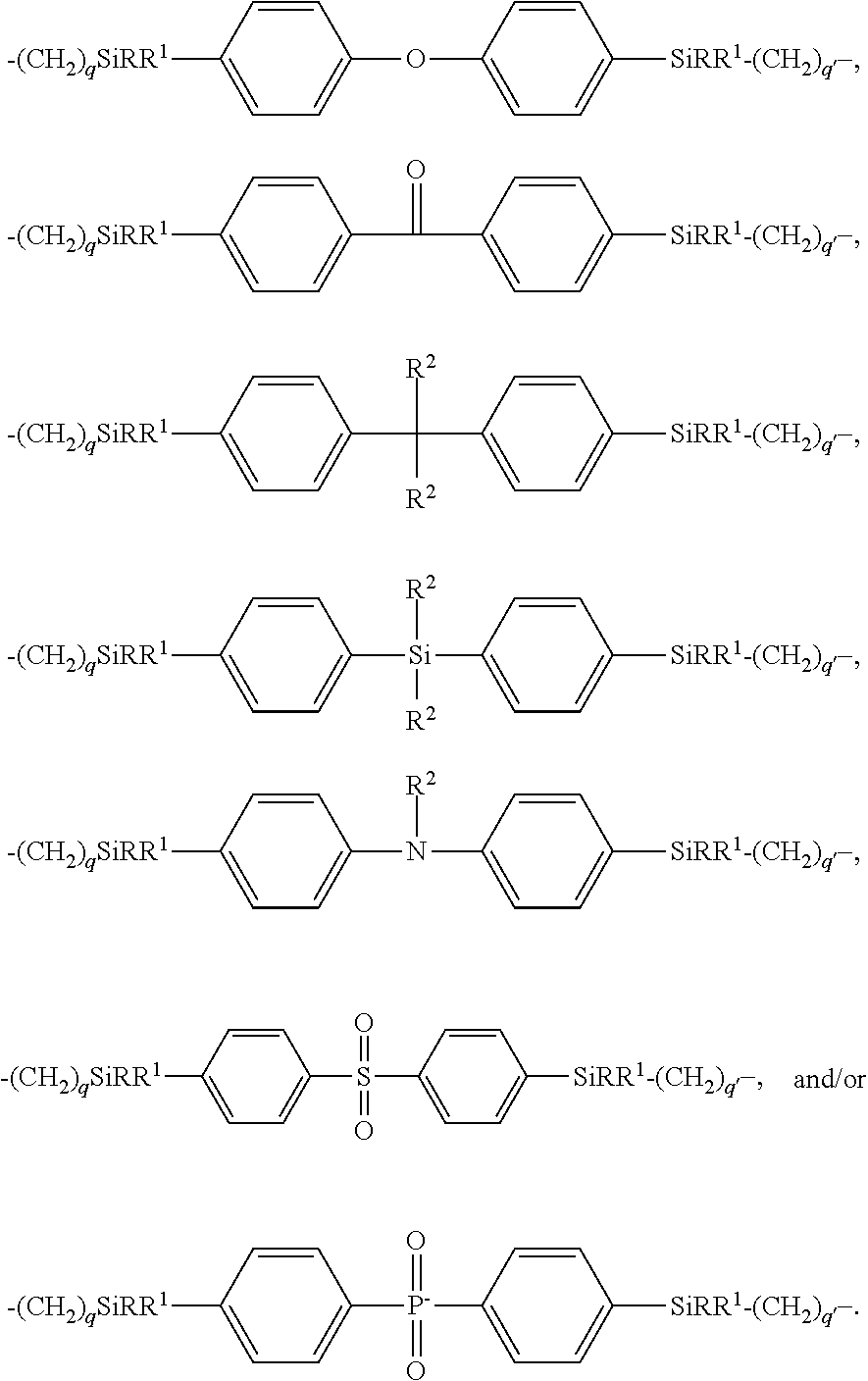Bridged silicone resin, film, electronic device and related methods
- Summary
- Abstract
- Description
- Claims
- Application Information
AI Technical Summary
Benefits of technology
Problems solved by technology
Method used
Image
Examples
preparation example 1
[0123]A bridging compound (bridging compound 1) is produced via a Grignard reaction. In particular, 100 grams of p-dibromobenzene, 10 grams of magnesium, and 400 grams of diethylether are disposed in a flask to form a mixture. The mixture is heated to reflux, held at reflux for 6 hours, and then cooled to room temperature. 56.3 grams of vinyldimethylchlorosilane are disposed into the flask and the contents of the flask are stirred for 2 hours. Any volatiles are removed from the flask using a rotary evaporator to leave a concentrate. The concentrate is then purified by vacuum distillation to isolate the bridging compound 1, which is 4-bis(vinyldimethylsilyl)benzene.
preparation example 2
[0124]A second bridging compound (bridging compound 2) is produced via a Grignard reaction. In particular, 100 grams of dibromophenoxy, 10 grams of magnesium, and 400 grams of diethylether are combined in a flask to form a mixture. The mixture is heated to reflux, held at reflux for 12 hours, and then cooled to room temperature. 40.5 grams of vinyldimethylchlorosilane are added to the flask and the contents of the flask are stirred for 2 hours. Any volatiles are removed from the flask using a rotary evaporator to leave a concentrate. The concentrate is then purified by vacuum distillation to isolate the bridging compound 2, which is 4-bis(vinyldimethylsilyl)phenoxybenzene.
example 1
Practical Example 1
[0125]A bridged silicone resin (bridged silicone resin 1) is produced in accordance with the present invention.
[0126]Specifically, 100 grams of a hydrogen silsesquioxane resin (molecular weight of 12,000; 32.0% by weight in toluene), 3.2 grams of bridging compound 1, and 0.01 grams of Karsetedt's platinum (Pt) catalyst are combined in a flask to form a mixture. The mixture is heated to reflux and stirred at reflux for 48 hours to form a silicone resin mixture. The silicone resin mixture is then cooled to 60° C., and 5 grams of active carbon are disposed in the flask to form a suspension. The suspension is then filtered and the filtrate is solvent exchanged with propylene glycol monomethyl ether acetate (PGMEA) using a rotary evaporator to a form a 20% by weight in PGMEA solution of the bridged silicone resin 1. The bridged silicone resin 1 has the general formula (HSiO3 / 2)x(SiO3 / 2—CH2CH2—SiMe2—C6H4—SiMe2—CH2CH2—SiO3 / 2)y, where x is 0.979 , y is 0.021, and Me indic...
PUM
| Property | Measurement | Unit |
|---|---|---|
| Temperature | aaaaa | aaaaa |
| Temperature | aaaaa | aaaaa |
| Temperature | aaaaa | aaaaa |
Abstract
Description
Claims
Application Information
 Login to view more
Login to view more - R&D Engineer
- R&D Manager
- IP Professional
- Industry Leading Data Capabilities
- Powerful AI technology
- Patent DNA Extraction
Browse by: Latest US Patents, China's latest patents, Technical Efficacy Thesaurus, Application Domain, Technology Topic.
© 2024 PatSnap. All rights reserved.Legal|Privacy policy|Modern Slavery Act Transparency Statement|Sitemap



